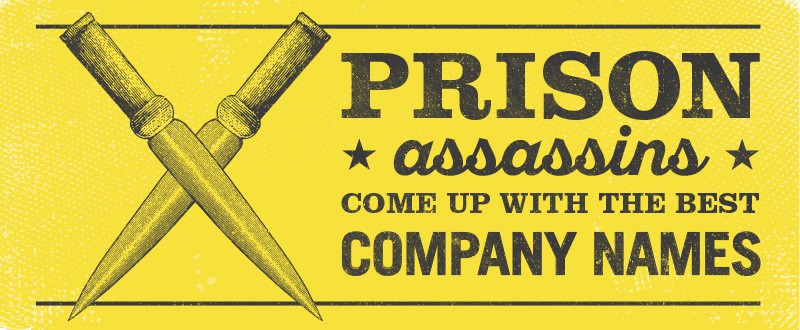
I was conducting my evening scroll through Instagram, as I usually do, when I stumbled into a mysterious brand I had never heard of—Bandulu. The name captured my eyes and the “ulu” echoed in my ears as I said it over and over in my head.
What an impressionable brand name—I didn’t know it’s meaning but I was already stirring up a collection of ideas of what it could be and what it might mean. Off the cuff, my mind went to a musical artist—maybe some type of reggae band that all wore bandanas on stage.
Then I thought it could be a sort of underground restaurant, tucked deep into the streets of Brooklyn or Chinatown. Before I let my mind wander any further, I ventured to the website, where I was captivated by something completely different—a vintage clothing atelier.
Bandulu was started by Pat Peltier when he decided to start covering his favorite stained Nike garments with hand-stitched embroidery. After throwing together impressive amounts of thrifted and used clothing, Peltier came up with the name Bandulu—a Jamaican term for bootleg. Here, he took beat down threads and turned them into collector’s items that brought quality and craftsmanship to everyday athletic apparel. This Bandulu approach resonated with streetwear so well that he partnered with Nike to deliver a special edition Kyrie Irving 5 as well as a Boston Celtics Converse.
As I reflected on that creative and counterintuitive brand name, I wondered how many other company names came to be. How did the Google’s, Nintendo’s, and Mountain Dew’s find the names that we’ve come to know so well? Was there a secret generator people were using to create names that build entrepreneurial empires? So I took to the great and powerful Google to find out how some iconic brands got their names.
The internet juggernaut originally was called “BackRub” for its ability to analyze the Internet’s backlinks. Maybe it’s just me but this option should have never been brought to the table. Imagine the internet giving you a back rub—no thanks.
After some serious deliberation, Larry Page and Sergey Brin took to the whiteboard to solve their naming issue. They blurted names back and forth, trying to find something that represented the large amount of indexing that was being done. A friend close by shouted the word googolplex, which Page shortened to Googol—referring to a large number. With a quick misspelling, they stumbled into the name Google—short, fun, and easy to remember. As you know now, the rest is history.
Nike
The sneaker brand that has dominated retail shelves and culture itself, wasn’t supposed to be 4 letters originally. Phil Knight, founder and creator of the brand, wanted to call it Dimension Six—an ode to his favorite musical group 5th Dimension. The idea didn’t stick, and for a moment, the name” Bengal” was thrown out to compete with Puma—as we know that hasn’t panned out as a name for Cincinnati fans.
After reading a magazine article about great brand names, Bob Woodell—the company’s first president—noticed something. All great names had a unique sound, using a Z, X, or K. One night of sleep later, Woodell awoke with Nike—the winged goddess of victory. From there the name was stamped on the first box and sent out June 18, 1971.
Nintendo
I bet you didn’t know that video games date all the way back to the 1800s. That’s right, Nintendo was founded in 1889. Now, there were no video games or televisions then but there were playing cards. These “hanafuda”, or flower cards, were made by Fusajiro Yamauchi as a simple entertainment game. Though the name’s origin can’t be specifically dated and traced, many translate it literally as a card-playing which means, “leave luck to heaven.” Others, such as The History of Nintendo book, translate it as “the company that is allowed to make (or sell) hanafuda, aka playing cards”—which is a pretty accurate reflection of what the brand did and continues to do today.
Virgin Atlantic
Virgin Atlantic has been doing the name thing differently from the beginning. Right out of the gate, they went for it using the term Virgin to describe their brand. The idea was a tribute to Richard Branson’s other business endeavor Virgin Records, which flaunts one of the most famous musical artist client lists in human history. After complications with a trip to the British Virgin Islands, Branson decided to get his hands on a used Boeing 747 and start flying to the vacation destination himself. He quickly uncovered a business opportunity that he named Virgin Atlantic, which he found fitting as the brand was completely new to the aircraft and flight business.
Today, Virgin flaunts some of the best names in the sky, including their G-VDIA Lucy in the Sky, G-VUFO named Lady Stardust, and three new Airbus A330-200 aircraft called Daydream Believer, Honky Tonk Woman, and Strawberry Fields.
Amazon
Would you rather buy something from Cadabra or Amazon? I think I like Amazon better. When Jeff Bezos first started the online bookstore—yes it started as a bookstore—he wanted it to be the “everything store” and have items appear like magic, aka “abracadabra”. This was quickly shut down after Bezos’ lawyer mispronounced it as cadaver.
From there, Bezos and his wife went through a slew of names—wake.com, browse.com, and bookmall.com, even relentless.com—which will still redirect you to Amazon to this day. After failing to find anything worthwhile, he took to the good ole’ dictionary and started with the A’s. Scanning down the page he stopped at Amazon—the largest river in the entire world—it seemed predestined. That minute he announced to the rest of his team that Amazon would be the name moving forward. And for the last 25 years, that name has dominated eCommerce and digital markets across the world.
ACDC
If you don’t get amped when Thunderstruck floods your ears, you’re not human. That riff is part of a collection of others that were echoed by ACDC during their tours in the 70s and 80s. The Angus brothers were full of energy and after seeing the Alternating and Direct Current symbols on their mother’s sewing machine, the name was theirs for the taking. Building off of the name, the band quickly jumped into the punk rock scene delivering ear-melting riffs through their massive amplifiers.
Mountain Dew
The neon yellow soda wasn’t originally crafted up for extreme sports athletes and caffeine fiends. It actually was made for the whiskey drinkers distilling their own product in the backwoods of the Appalachian mountains. Back in 1932, brothers Barney and Ally Hartman started bottling and selling the fizzy, fluorescent drink to Tennessee locals. The name itself was a play on the most common term for moonshine at the time ”Mountain Dew”. Paired with a cartoon logo of a hillbilly guarding and outhouse, the beverage blew up with cocktail enthusiasts and basic beverage consumers alike. Since being bought out by PepsiCo in 1964, Mountain Dew has dominated the soft drink arena, even bringing back its OG recipe made with pure cane sugar in 2015.
PitchFork
After abandoning commercial radio and looking for a way to tap into underground music, Ryan Schreiber decided to start something all his own. Country music was flooding the population’s ear in 1996, and people needed a place to find new alternative music. Schreiber first launched his idea as “Turntable” , a monthly music zine for alternative tunes. The name was catchy but led to a stern cease and desist from a CD-Rom company with the same title. As a result, Schreiber dug into his favorite film Scarface, where he uncovered the alternative and edgy symbol he was looking for: a pitchfork. The item that proved to be the spawn of a cocaine cowboy was also the perfect fit for a music review mogul.
Apple
Stories surrounding the fruit brand have swirled for decades. Some think the name is derived from the creation story and the apple that was placed in the Garden of Eden, others side with the idea that sir Isaac Newton had an apple fall on his head when he identified gravity. (Don’t believe me, check out the first logo drafted by Ron Wayne in 1976)
All theories aside, the name’s development was rather simple. During his fruitarian diet adventures, Steve Jobs took a trip to an apple farm. After wandering the orchard and playing with name ideas, he decided that Apple felt “fun-spirited and not intimidating.” He took the name back to his team where they settled on the fruit concept after deciding it was the best option on the table.
The Lesson
Your brand name can come from anywhere. Could be your favorite movie character, boozy beverage, or even a misspelling of your lucky number, the important thing is that it represents you. Every business, band, or product has its own story, use your name to tell it.
If you need some help on what to call your company or product, we’ve got your guide right here. If you’re in the mood for more marketing nuggets, sign up for our weekly Recipe that will be sure to fulfill your cravings.
